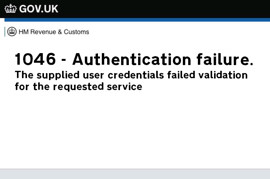If you work within a Community Interest Company (CIC) or have been polishing up on your accounting terminology and have come across the phrase 'asset lock' or 'locked assets' you are unsure what this term means then you are in the right place, today we will explain what an asset lock is and answer the most common questions about them.
What is an asset lock?
An asset lock is a legal safeguard that ensures that a company's assets are only used for the benefit of the community it serves and do not serve to provide private gain.
An asset lock is used by many different company structures such as community interest company, charities, charitable incorporated organisation (CIO) and community benefit societies. The reason for its wide adoption by each of the company structures stated above is because they are all legally required to have a 'statutory asset lock' which is documented deeply within their governance to prevent the assets to be transferred to individuals or other entities where a private benefit would arise, typically on the closure of one of the company structures above.
If a CIC is being wound up and has not already nominated another asset locked body that will received its locked assets, then it will require the regulators consent to transfer any residual assets which would require the completion of the CIC-53 form to aid the regulator in deciding whether the transfer is within the regulations
Asset Lock - Key Facts
- It protects assets such as money, land & equipment from providing private gain to individuals or businesses
- Ensures that any profits generated and assets of a CIC (or any similarly structured entity) are reinvested back into the community and continue to benefit the community
- If a CIC (or similarly structured entity) decides to close down then any remaining assets (locked assets) must be transferred to another asset locked organisation
- It is a legal requirement for CIC's, Charities, CIO's and Community Benefit Societies to have a statutory asset lock as dictated within the CIC's Articles of Association
What is a locked asset?
A locked asset is the terminology used to describe any asset within a CIC (or any similarly structed entity) such as money, land, equipment and any other similar item that is legally protected to ensure it is only used for the benefit of the community that the CIC serves.
Thereby any locked assets including the profits/surpluses of the CIC must be utilised towards the benefit of the community or the social mission of the CIC. Even when a CIC is dissolved locked assets cannot be 'unlocked' so to say. Instead the item must be transferred to another 'asset locked body' to ensure the assets continue to provide upsides to the local community.
Why are asset locks used?
As discussed above asset locks are written into both the governance of the entities (documented within the Companies (Audit, Investigations and Community Enterprise) Act 2004) as well as the articles of association but you may be questioning why this is the case. There are three reasons that are highlighted for why asset locks are used:
1. Prevent private gain
The most important reason why assets locks are utilised for community serving entity structures such as charities and CICs is to stop an individual (e.g. directors, shareholders or employees) or business can use the assets themselves to generate a personal gain, whether that is a profit from its sale or the misuse of the assets themselves.
2. Guarantee the assets provide benefits to the community
These assets are purchased (equipment & land) or generated (profits & surpluses) to support the entity to achieve its mission and to pursue its purpose whether that is to help a local community, provide further education or simply providing social services.
Therefore, the asset lock ensures that the items continue to serve their purpose and continue to be a net gain to the local community by preventing them from being able to be transferred to an organisation that may utilise the items for personal gain. By preventing the assets from being transferred to a non-asset locked body it ensures they can continue to provide benefits to the community.
3. Promote Transparency and Trust
An asset lock provides additional reassurances to funders, donors and stakeholders that their funds and/donations are guaranteed to provide benefits and that the funds and locked assets will not be misused.
This trust and transparency is vital to CIC's that are looking to attract public or grant funding to continue operating.
Looking For Further Information?
Hopefully this article has answered your questions about locked assets and asset locked bodies. For more information on topics related to running a CIC, feel free to explore our Knowledge Base. If you are looking for any further information, do not hesitate to contact us.























